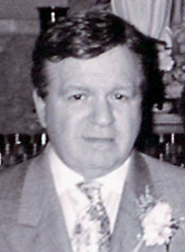Twenty years ago, a book titled “The Super Traders” set out to capture the “secrets and successes of Wall Street’s best and brightest” minds. Then, there were three national markets and 407.3 million shares traded a day. In today’s Part II of the April cover story are the perspectives of two more of those “best and brightest” minds on how trading has changed.
Here are the stories of Jay Mangan and Joe Apisa, two more Super Traders.
The Institutional Trader
Jay Mangan

Then: Managing director, head of equity trading, Citibank
Helped transform institutional trading from a clerical function into a profession. “The way to do this is to get the first call priority treatment from the Street. If you’re just turning your hands over and dumping out commissions, you’re just an order clerk.”
Now: Retired
I had a fantastic career on Wall Street, working on the sellside and buyside, retiring from Citibank in 2003. One way I was able to last so long was my ability to always adapt to new and innovative ways of trading. I was an early user of order management and electronic trading systems, although nothing to the extent that they are now utilized. And to think I started my career on the Midwest Stock Exchange, where price discovery took place on big chalkboards.
I actually believe my most productive years were in my 50s, where I was able to benefit from all the relationships I had developed at Citi and expand my role at the bank through trading for various departments, whether they be in M&A, Treasury or other investment departments. However, when it was time to retire, I had no regrets. And retirement did not dampen my competitive spirit. Shortly after leaving the business, I participated in the Polar Dash, a grueling 60-mile expedition on skis to the North Pole across the polar ice cap. Even consuming 8,000 to 10,000 calories a day, I still lost 30 pounds.
The market is a much more dishonest place these days. Twenty or 30 years ago, you could not hide behind dark pools and the like. It was much easier to look at the tape and know that you had been screwed. You can’t easily do that today. In earlier times, relationships really mattered; things are so much more transactional today, and it is much easier to hide behind an algorithm.
However, once a trader, always a trader. In my retirement, I became an active trader on eBay. I have always collected American Indian artifacts and art and have built a rather substantial collection over the years. Perhaps the greatest trade of my life was when I bought a 19th-century American Indian war shirt once owned by Chief Black Bird. I bought it for $80,000 and sold it at Sotheby’s for $2.5 million.
The Sales Trader
Joe Apisa

Then: Managing director and head of institutional equity trading, Gruntal & Co.
Worked in equity trading division for Michael Bloomberg-at Salomon Brothers, before the future data-terminal billionaire got fired. Left Salomon to run Drexel Burnham Lambert’s equity sales trading operation.
Now: Retired
The securities trading business as I knew it doesn’t exist anymore. Many of the most important elements of being a successful sales trader-getting the important first call for an order from the buyside trader, the negotiation process with your block trader, building a relationship over many years with your client-this is all a lost art. It is gone forever.
There is no interaction between the buyside and sellside to talk about blocks of stock and to negotiate. In my time on the desk, consistency built trust. This can’t take place if you are not talking to your client. Today it all goes into the machine and it matches up.
Technology has taken the humanity out of the securities trading business. It all started with the growth of Instinet in the United States, which probably precipitated the closing of multiple brokerage firms.
Twenty years ago, a good block trader would have maybe 10 to15 stocks on his blotter, but he would know them like the back of his hand. I had dinner with an old colleague last week. He told me he makes markets for 600 stocks at a time. The computers make the markets. A different world.
Certainly a key driver of many of the changes has been the incredible compression of commissions over the past 40 years or so. Before May Day 1975 and the abolishing of fixed commission rates, I could trade 10,000 shares of GM and receive 45 cents per share. Today, most institutional traders might get a penny or two per share for their efforts, albeit on much higher volumes.
After my sales trading days were over in 2003, I started a small brokerage firm with some friends, dedicated to day traders. Most of them who traded this way eventually blew up. It happened all the time, and I bet it still goes on today.
I loved the business, and it enabled me to pursue my other great passion: horse racing. I had a horse farm for 10 years. That was a lot of fun. Today I trade my portfolio from home and manage my kid’s investments as well. I also trade diamonds and gold.



